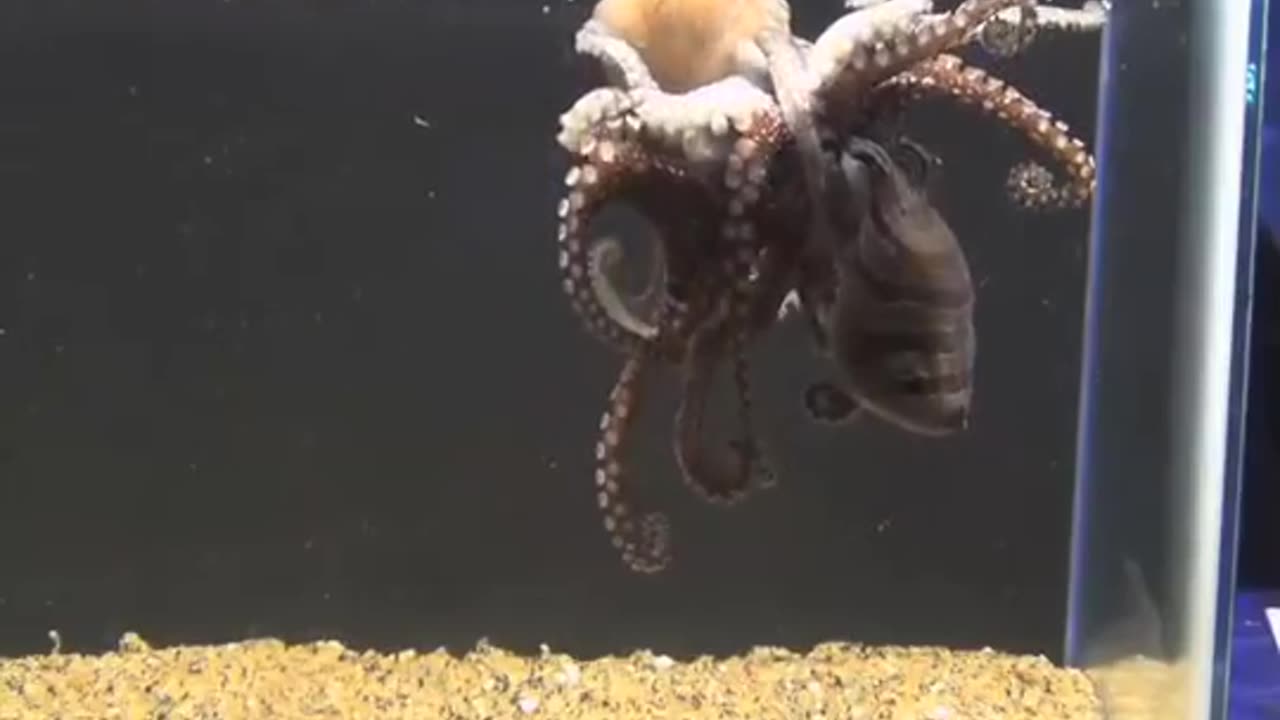Premium Only Content

Larger Pacific Striped Octopus Mating
The Larger Pacific Striped Octopus (LPSO) is a fascinating cephalopod species known for its unique mating behavior, distinguishing it from other octopus species. This small-sized octopus, typically reaching a size of about 5 inches (13 centimeters), resides in the Eastern Pacific Ocean, particularly along the coast of Nicaragua.
Mating in the Larger Pacific Striped Octopus involves a complex dance of colors, movements, and coordination between males and females. Unlike many other octopus species that engage in solitary mating encounters, LPSOs engage in a cooperative and mutually beneficial mating ritual. During this intricate display, both the male and female undergo vivid color changes, showcasing their vibrant stripes and patterns.
The courtship ritual begins with the male approaching the female, tentatively extending one arm towards her. The male then gently strokes the female's arms, displaying intricate color patterns and using a combination of visual signals and tactile cues to communicate. This synchronized dance continues as both octopuses engage in a mesmerizing display of chromatophore-controlled colors, creating a visually stunning underwater spectacle.
As the connection between the male and female deepens, the male eventually transfers a specialized arm called the hectocotylus to the female, enabling her to store sperm for later fertilization. This unique mating behavior, characterized by cooperation and intricate communication, sets the Larger Pacific Striped Octopus apart from other cephalopods.
#LPSO #OctopusMating #CephalopodLove #UnderwaterDance #OceanLife #StripedOctopus #MarineBiology #WildlifeWonder #PacificOceanBeauty #MatingRituals
-
 1:28:39
1:28:39
FreshandFit
5 hours agoThe Truth About Content Creation Ft. Mr Organik
35.1K4 -
 9:00:08
9:00:08
RalliedLIVE
10 hours ago $0.32 earnedSHOTTY BOYS VS RANKED
57.3K3 -
 3:23:16
3:23:16
Barry Cunningham
6 hours agoPRESIDENT TRUMP CELEBRATE FALLEN POLICE OFFICERS AND HOSTS EVENT AT THE KENNEDY CENTER!
54.6K56 -
 LIVE
LIVE
VapinGamers
3 hours agoDeathbound - Game Review and Playthru - !game #sponsored
89 watching -
 LIVE
LIVE
HELMETFIRE
3 hours ago🟢 OFF THE GRID! 🟢 RUMBLE TAKEOVER! 🟢
233 watching -
 2:38:20
2:38:20
TimcastIRL
4 hours agoBiden CANCER COVER UP, Biggest SCANDAL In US History, Trump DEMANDS Answers | Timcast IRL
382K38 -
 2:38:22
2:38:22
Tucker Carlson
4 hours agoShawn Ryan: Biden’s Cancer, Kash & Bongino on Epstein, & CIA Attempts to Infiltrate Podcasts
107K91 -
 9:42:59
9:42:59
Dr Disrespect
13 hours ago🔴LIVE - DR DISRESPECT - WARZONE RANKED - DIAMONDS
170K12 -
 1:48:29
1:48:29
Glenn Greenwald
7 hours agoIsrael Pretends to Let Food into Gaza as More Allies Condemn Atrocities; Witkoff Proposes Impossible Iran Deal Red Line; Biden's Cancer Diagnosis Raises More Cover-Up Questions | SYSTEM UPDATE #457
221K110 -
 1:26:52
1:26:52
Joker Effect
3 hours agoITS MY BIRTHDAY! COME WISH ME A HAPPY BIRTHDAY
17.8K9